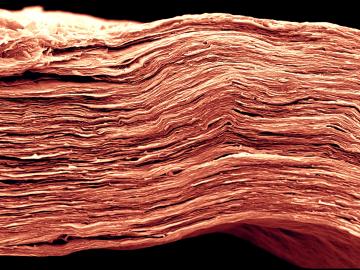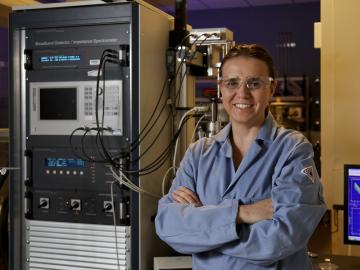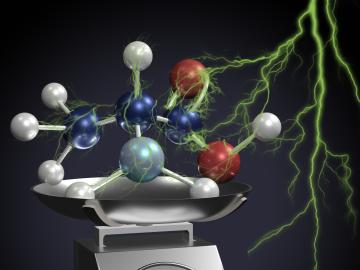
Filter News
Area of Research
- (-) Isotopes (5)
- (-) Materials (112)
- Advanced Manufacturing (3)
- Biology and Environment (41)
- Biology and Soft Matter (1)
- Computational Engineering (1)
- Computer Science (7)
- Electricity and Smart Grid (3)
- Energy Frontier Research Centers (1)
- Energy Science (131)
- Energy Sciences (1)
- Functional Materials for Energy (2)
- Fusion and Fission (29)
- Fusion Energy (15)
- Isotope Development and Production (1)
- Materials for Computing (11)
- National Security (29)
- Neutron Science (34)
- Nuclear Science and Technology (15)
- Quantum information Science (2)
- Sensors and Controls (2)
- Supercomputing (45)
- Transportation Systems (1)
News Topics
- (-) Energy Storage (34)
- (-) Fusion (7)
- (-) Grid (5)
- (-) Machine Learning (5)
- (-) Nanotechnology (39)
- (-) Physics (28)
- (-) Security (3)
- (-) Space Exploration (5)
- 3-D Printing/Advanced Manufacturing (23)
- Advanced Reactors (4)
- Artificial Intelligence (9)
- Big Data (2)
- Bioenergy (11)
- Biology (4)
- Biomedical (12)
- Buildings (5)
- Chemical Sciences (32)
- Clean Water (3)
- Composites (9)
- Computer Science (18)
- Coronavirus (4)
- Critical Materials (13)
- Cybersecurity (4)
- Environment (15)
- Exascale Computing (2)
- Frontier (3)
- High-Performance Computing (4)
- Irradiation (2)
- Isotopes (34)
- ITER (1)
- Materials (73)
- Materials Science (79)
- Mathematics (1)
- Microscopy (27)
- Molten Salt (3)
- National Security (4)
- Neutron Science (33)
- Nuclear Energy (19)
- Partnerships (11)
- Polymers (17)
- Quantum Computing (3)
- Quantum Science (11)
- Simulation (1)
- Summit (2)
- Transportation (14)
Media Contacts

A new method developed at Oak Ridge National Laboratory improves the energy efficiency of a desalination process known as solar-thermal evaporation.

A team of researchers at Oak Ridge National Laboratory have demonstrated that designed synthetic polymers can serve as a high-performance binding material for next-generation lithium-ion batteries.

Scientists have discovered a way to alter heat transport in thermoelectric materials, a finding that may ultimately improve energy efficiency as the materials

Ionic conduction involves the movement of ions from one location to another inside a material. The ions travel through point defects, which are irregularities in the otherwise consistent arrangement of atoms known as the crystal lattice. This sometimes sluggish process can limit the performance and efficiency of fuel cells, batteries, and other energy storage technologies.


Vera Bocharova at the Department of Energy’s Oak Ridge National Laboratory investigates the structure and dynamics of soft materials.

More than 1800 years ago, Chinese astronomers puzzled over the sudden appearance of a bright “guest star” in the sky, unaware that they were witnessing the cosmic forge of a supernova, an event repeated countless times scattered across the universe.

Scientists have tested a novel heat-shielding graphite foam, originally created at Oak Ridge National Laboratory, at Germany’s Wendelstein 7-X stellarator with promising results for use in plasma-facing components of fusion reactors.

OAK RIDGE, Tenn., Feb. 8, 2019—The Department of Energy’s Oak Ridge National Laboratory has named Sean Hearne director of the Center for Nanophase Materials Sciences. The center is a DOE Office of Science User Facility that brings world-leading resources and capabilities to the nanoscience resear...

OAK RIDGE, Tenn., Jan. 31, 2019—A new electron microscopy technique that detects the subtle changes in the weight of proteins at the nanoscale—while keeping the sample intact—could open a new pathway for deeper, more comprehensive studies of the basic building blocks of life.


